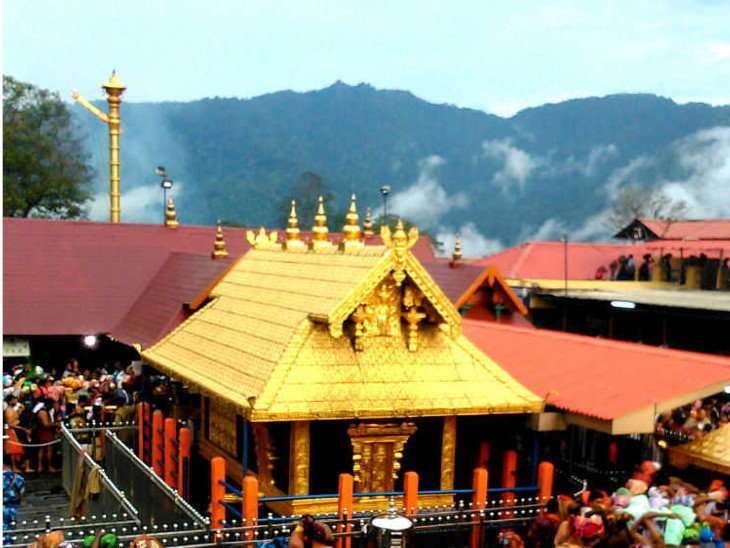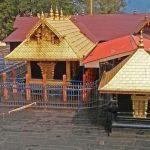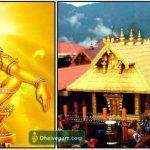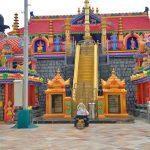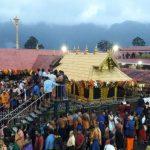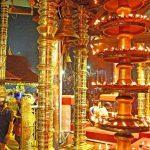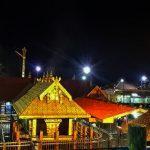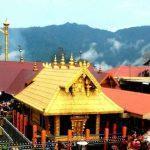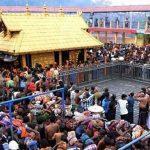Contents
Sabarimala, Pathanamthitta, Kerala
| Date built: | Before 12th century |
|---|---|
| Deity: | – |
| Architectural style: | Kerala Temple architecture |
| Major festivals | Makaravilakku |
| Locale: | Perunad |
| District:: | Pathanamthitta |
| Address: | – |
| Phone | – |
Sabarimala is a Hindu temple complex located at the Periyar Tiger Reserve in Kerala, India, considered to be one of the holiest in Hinduism.It is the largest annual pilgrimage in the world with an estimated 17–30 million devotees visiting every year.Some estimates put the number of annual visitors as high as 50 million.The temple is dedicated to the god Ayyappan also known as Dharma Sastha, who according to belief is the son of Shiva and Vishnu.[6] The traditions of Sabarimala are a confluence of Shaivism, Shaktism, Vaishnavism, and other Śramaṇa traditions.
Sabarimala Sree Dharma Sastha Temple, dedicated to Lord Ayyappa, is the most famous and prominent among all the Sastha temples in Kerala.
The temple is situated on a hilltop (about 3000 feet above sea level) named Sabarimala in Pathanamthitta district, which is unique. The temple is open to people belonging to all religions. There is a place near the temple; east of Sannidhanam (the abode of Lord Ayyappa), dedicated to Vavar (a close friend of Lord Ayyappa) which is called Vavaru Nada, an epitome of religious harmony. Another unique aspect of this temple is that it is not open throughout the year. It is open for worship only during the days of Mandalapooja, Makaravilakku and Vishu.
It is said that the pilgrims have to observe celibacy for 41 days before going to Sabarimala. Pilgrims take the traditional forest routes as well as the one from Pamba which is less physically challenging to reach the temple.
The temple is situated on a hilltop amidst eighteen hills at an altitude of 480 m (1,574 ft) above sea level, and is surrounded by mountains and dense forests. The dense forest (Periyar Tiger Reserve) around the temple is known as Poongavanam. Temples exist in each of the hills surrounding Sabarimala. While functional and intact temples exist at many places in the surrounding areas like Nilakkal, Kalaketty, and Karimala remnants of old temples survive to this day on remaining hills.
In response to a PIL filed in 1991, the Kerala High Court had observed the restriction of entry of women ( in the 10-50 age group ) to the temple was in accordance with the usage prevalent from time immemorial. In lieu of this, it had directed the Devaswom Board to uphold the customary traditions of the temple. However, on 28th September 2018, the Supreme Court of India, overturned the ban on the entry of women, declaring that the selective ban on women was unconstitutional and discriminatory.
The temple is open for worship only during the days of Mandalapooja (approximately 15 November to 26 December),Makaravilakku or “Makara Sankranti” (14 January) and Maha Vishuva Sankranti (14 April), and the first five days of each Malayalam month.
Architecture
The Sannidhanam (main temple) is built on a plateau about 40 feet high.The temple was rebuilt after arson and vandalism in 1950 thought to have been carried out by Christians according to the police investigation. No charges were brought.and the earlier stone image of the deity was replaced by a panchaloha idol, about 1 and half feet, made from an alloy from five metals.
The temple consists of a sanctum sanctorum with a gold-plated roof and four golden finials at the top, two mandapams, the balikalpura which houses the altar. In 1969, the flag staff (dhwajam) was installed.
The shrine of Kannimoola ganapathi prathishta is south-west to The Sreekovil of the Sannidhanam. Devotees offer part of the broken coconut (Neythenga) to the fireplace (Azhi). Ganapathi homam is the main offering.
The shrine of the Lord of snakes, Nagarajav is placed adjacent to the malikappuram temple. Pilgrims after the Darsan of Lord Ayyappa and Kannimoola Ganapathi, make their darsan and give offerings to Nagarajav.
The Pathinettu thripadikal or the 18 sacred steps is the main stairway to the temple. As per the custom followed, no pilgrim without “Irumudikkettu” can ascend the 18 sacred steps. In 1985, the 18 steps were covered by panchaloka and later covered with gold. The stairway in northern gate is open for those who do not carry an “Irumudikkettu”.
The temples of Lord Ayyappan’s trusted lieutenants Karuppu Sami and Kadutha Swami are positioned as his guards at the foot of the holy 18 sacred steps.
The temple of Maalikapurathamma, whose importance is almost in par with Lord Ayyappa, is located few yards from Sannidhanam. It is believed that the Lord Ayyapan had specific instructions that he wanted Malikappurath Amma, on his left side. Prior to the fire disaster, there was only a Peeda Prathishta (holy seat) at Malikappuram. The idol of Malikappurath Amma was installed by Brahmasree Kandararu Maheswararu Thanthri. The Devi at Malikappuram holds a Sankh, Chakram and Varada Abhya Mudra. Now the idol is covered with a gold Golaka. The temple also was reconstructed in the last decade and now the conical roof and sopanam is covered with gold.[20][unreliable source?]
Manimandapam, is the place where Ayyappan Jeeva samadhi[Arya kerala jeevasamadhi The Sabarimala temple complex include Pampa Ganapathi temple, Nilakal Mahadeva temple and Palliyara Bhagavathi temple. The Nilakal Mahadeva temple and Palliyara Bhagavathi temple is as old as the Sastha temple and the deities are worshiped as the parents of Lord Ayyappa. Ganapathi temple at Pampa has Pampa Maha Ganapathi and Athi Ganapathi (lit. old ganapathy), sreekovil where the idol from the first Ganapathy temple is worshiped. Sabari Peedam has a temple of Sri Rama and Hanuman also
Legend / Local stories
Photo Gallery
How to Reach:
Contact Details
Official Address

